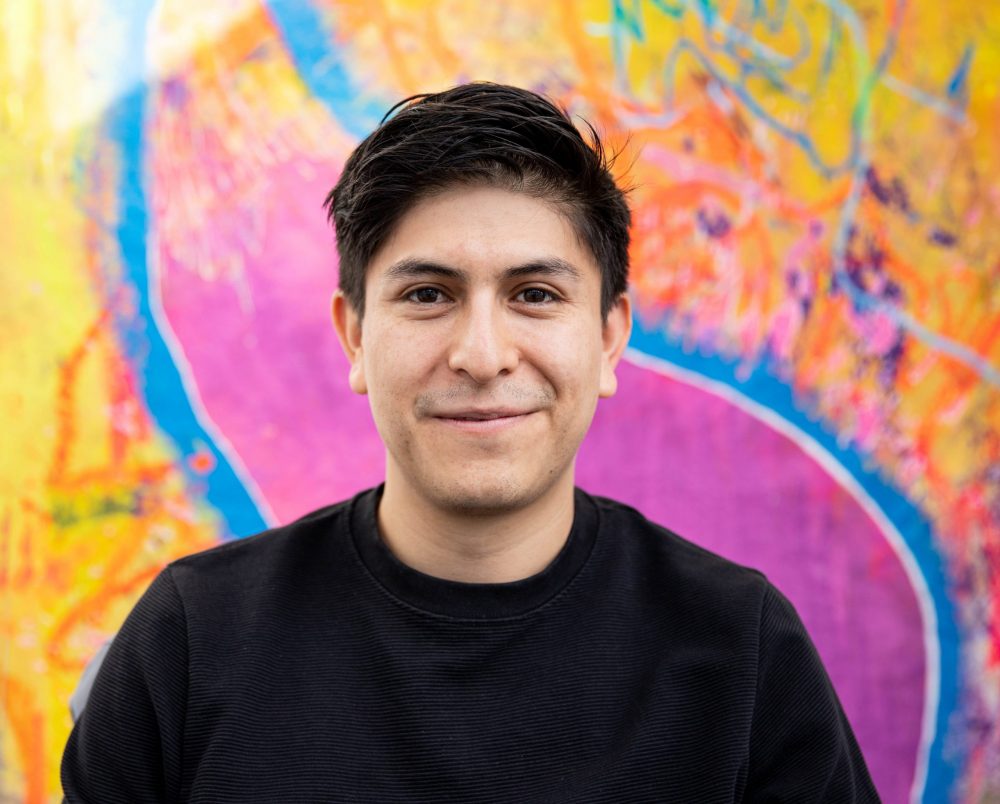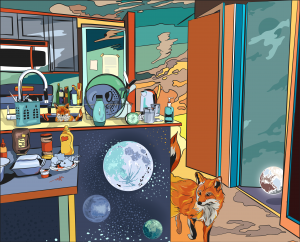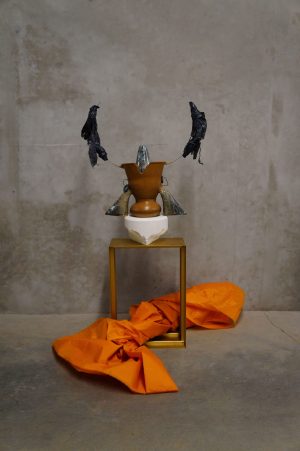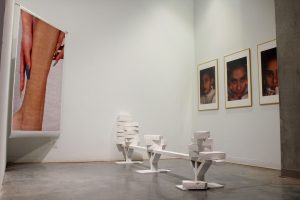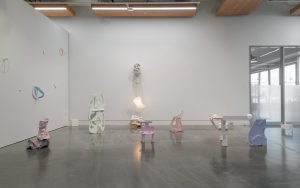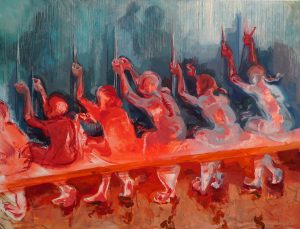Liquid Land
Esteban Pérez
Artist Statement
My artistic work strives to move beyond the anthropocentric gaze that treats humans as exceptional and fundamentally separate from the rest of the world. I explore new ways of perceiving nature that decenter our gaze towards the more-than-human world and allow for other regimes of seeing and listening. Using the concept of “frequency” to relate to the more-than-human world, my work erodes colonial dualisms between human and nonhuman, or nature and culture, in order to provide a future-oriented imaginary of planetary and place-based embodied knowledge.
Balancing between Knowing and Not-Knowing is a fundamental part of my process. Through an exploratory material-based process, I let go of my knowledge and move my attention towards the intelligence of the material. Through sound and video recordings, found objects, and natural elements, I attempt to create a dialogue with Nature’s material intelligence and subjectivity. Sound is fundamental to my practice, and I rely on field recordings to listen to layers of sounds that escape the human hearing range. Through layered sound, I explore the vibrancy of nature’s materiality and amplify the entangled polyphony of voices that exist between the more-than-human and human activity.
My work channels temporal conceptions from Andean Futurism and Black Quantum Afrofuturism, which posit that time is a malleable element. These frameworks see the future as a place that does not belong to anybody. This idea creates room for change and possibility, where historically underrepresented minorities can access the future. In my work, I expand this idea to nature. Speculating on a future where Andean epistemologies enter the dominant narrative can help us develop a different relationship with the many voices existing on our planet.
Liquid Land is an installation informed by Indigenous ways of knowing from Ecuador and by ideas that Squamish artist, Aaron Nelson-Moody aka Splash shared with me during our collaboration on the Earth Project. The work attempts to stop seeing nature and the forest through an extractive gaze, where nature is only a commodity and an object that needs to be exploited for capitalist profit, and instead tries to understand the complex living ecosystem of the forest where more-than-human entities, human bodies, and spirits from the past meet.
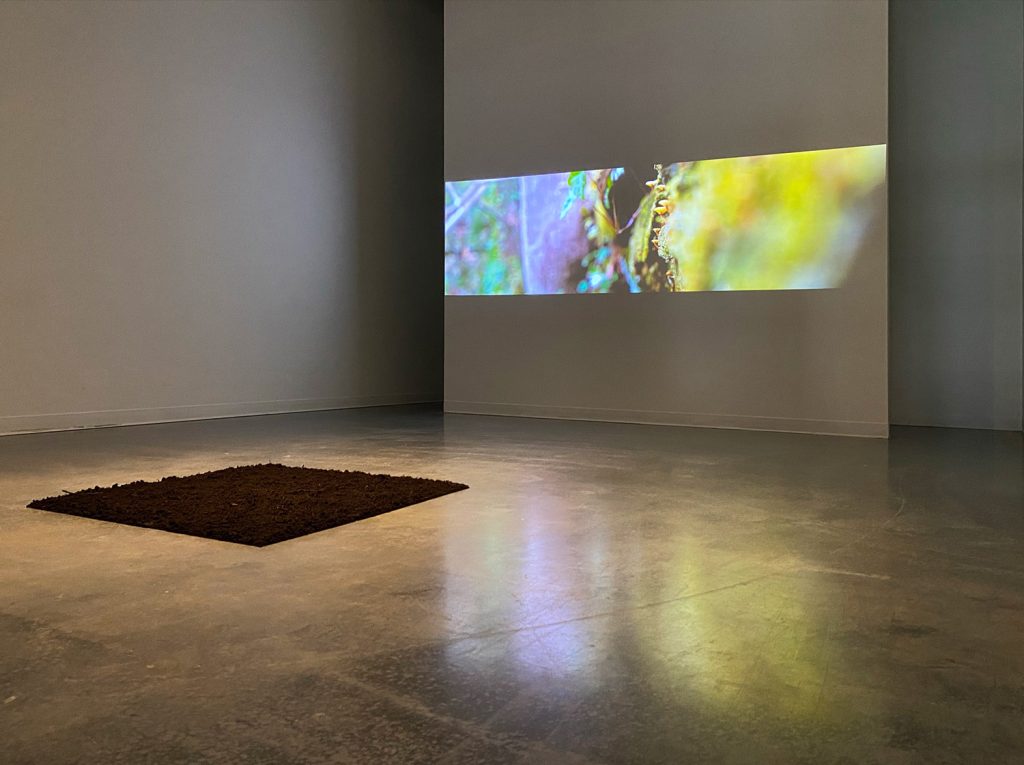
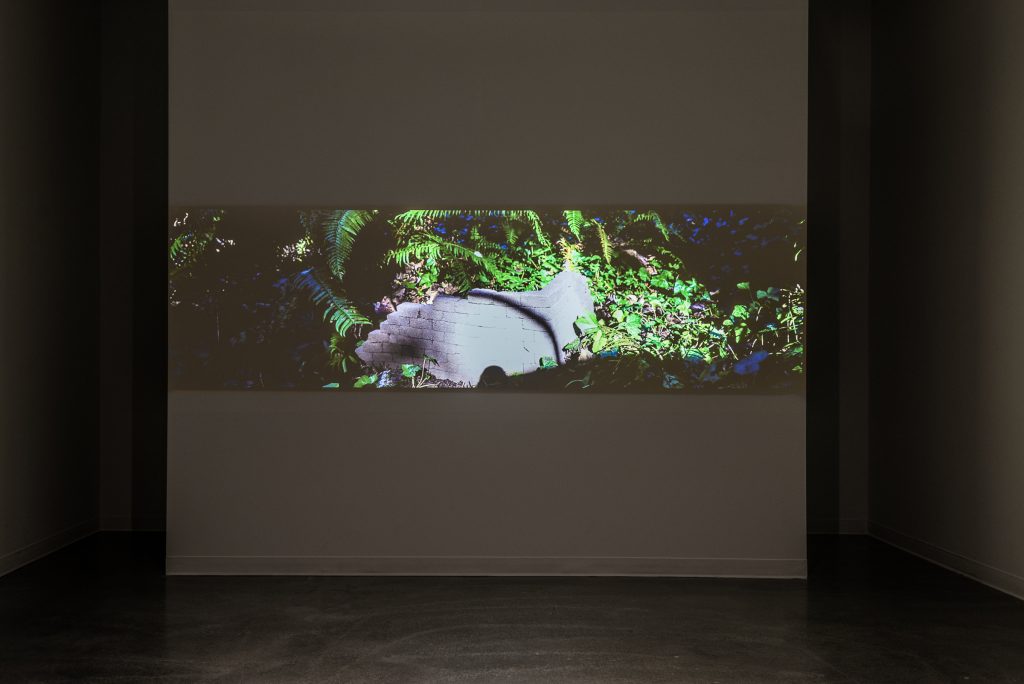

Liquid Land presents a 15:03 minutes video of a brick sculpture made from a mix of unceded territory —land from outside the school— and First Nations Land — collected with Splash. The idea behind placing the sculpture back in the forest was to let the biological and natural processes like rain, snow, and wind, dissolve the ideological divisions embedded in the land narrative. The video presents a slow process of decomposition that forces the viewer to experience a different sense of time, a more-than-human time. Another element of the installation was a square meter of First Nations Land that was placed on the gallery’s floor. This Earth component represents the extractive gaze that measures, delimits, and sees Land as property and a commodity. In addition to the video and the Earth square, there is a sound and noise composition that works as a fluid disruptive element that transgresses measurement and spatial constraints. The sound composition operates beyond an ocular-centric logic and attempts to access the frequencies of these other vibrant invisible realms or planes proposed by Andean Phenomenology. The field recordings were made in the forest and then they were stretched and amplified. The sound composition attempts to access the spaces in between the three realms and to present them to the public in order to create an embodied experience of these other layers of frequencies.
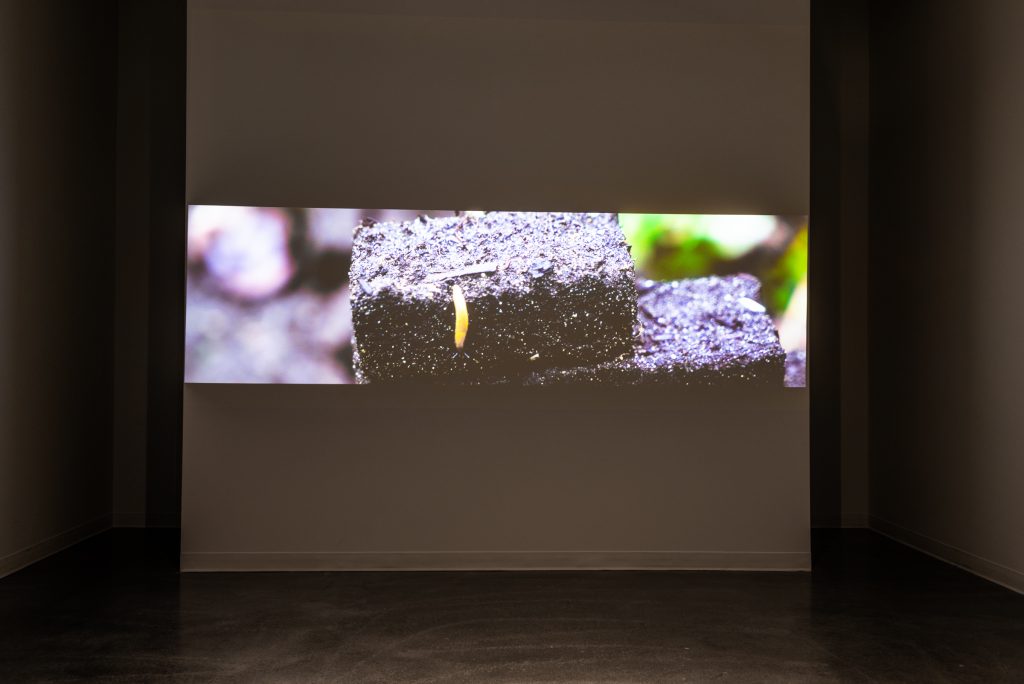
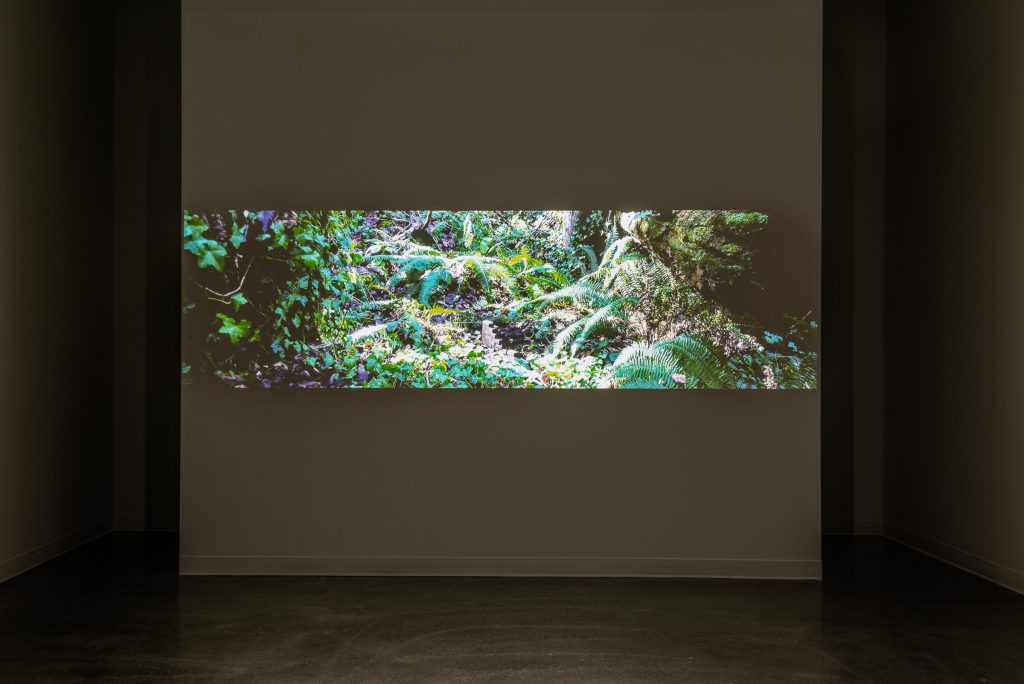
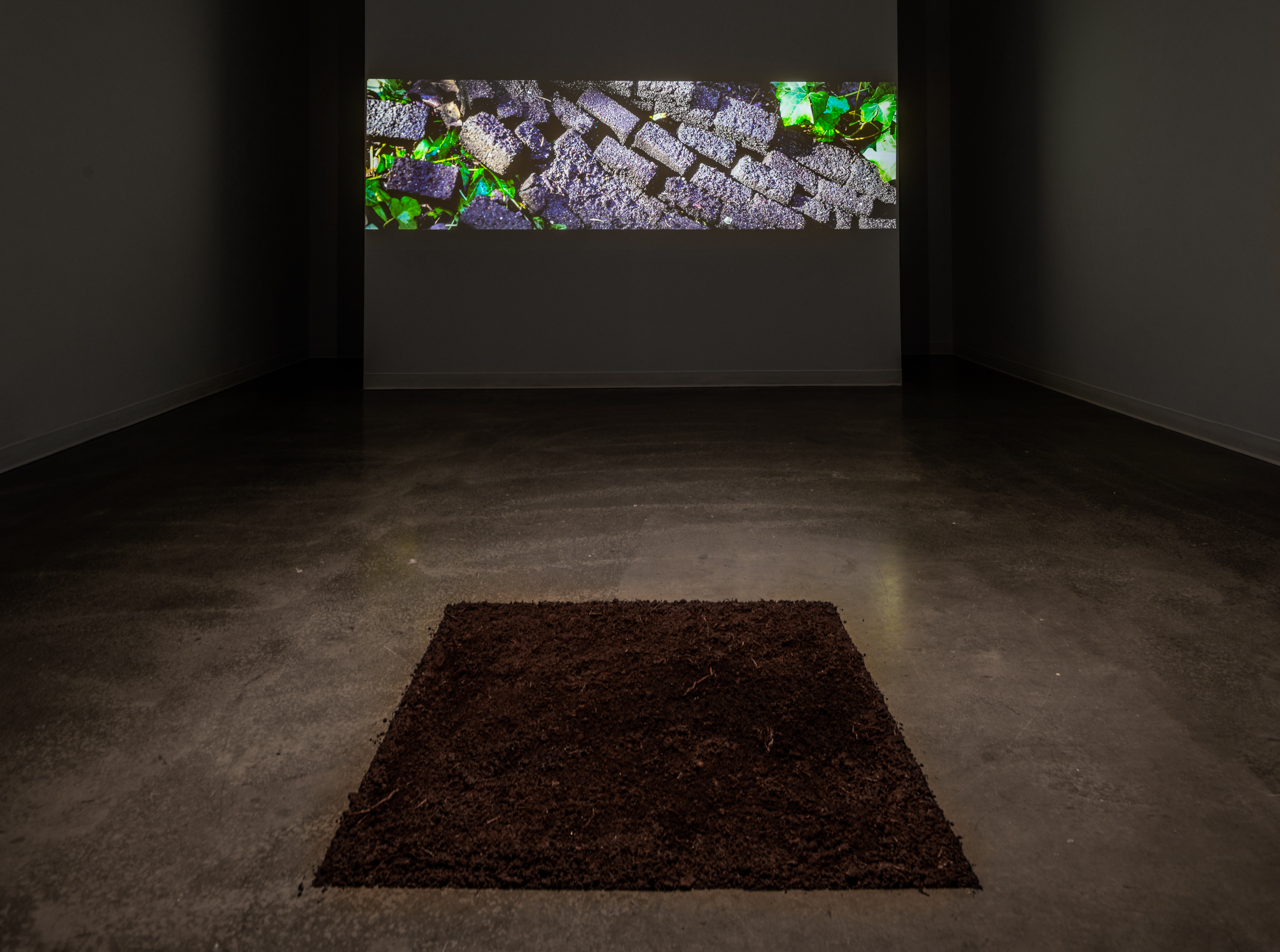
Credits
Concept & Sound: Esteban Pérez
Video: Rosalina Cerritos
Installation Photographs : Michael Love
Special Thanks
Aaron Nelson-Moody aka Splash
Honourable Mention
- Vancouver Art Attack Award for Excellence in Visual Arts
